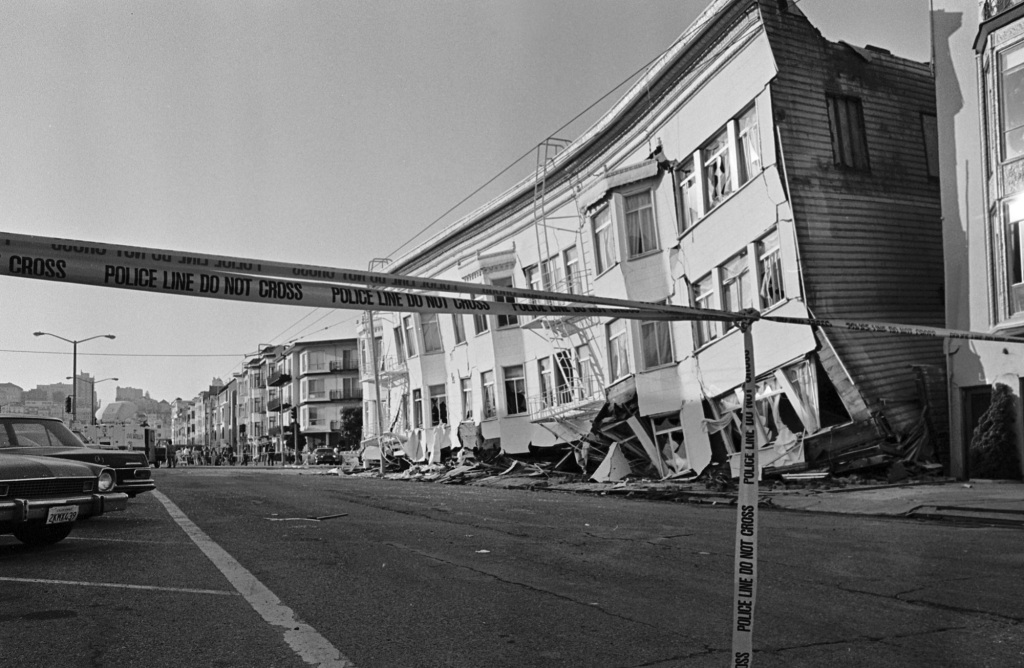The Big One is coming. And thousands of homes across the Bay Area aren’t ready for it.
If your house is among those that aren’t yet earthquake-safe, you may qualify for a new state program to help pay for seismic retrofits. Starting in late April, homeowners in Oakland, Berkeley and San Francisco can apply for grants to reinforce single-family homes with a vulnerable “soft story” on the ground floor.
The most common example is an older house with a garage below the main living area, said Janiele Maffei, chief mitigation officer for the California Earthquake Authority, the agency overseeing the program.
“You’ve taken out all the elements that resist earthquake forces — and that’s the walls,” she said.
Many soft-story houses can be reinforced with steel or wood, but homeowners often balk at the hefty price tag — which can range from $14,000 to $27,000, Maffei said. The new pilot program, using $5 million in federal funding, is set to provide at least 300 grants of up to $13,000 each. The funding will also cover administrative costs. Homeowners in Los Angeles and Pasadena can apply for the same pot of money.
Exactly how many single-family homes in the Bay Area and across California need soft-story upgrades is unclear. But a 2016 report by the Association of Bay Area Governments estimated 18,000 residential buildings of all types in the region have ground stories “that have a tendency to collapse when shaken hard enough.”
Maffei said the hope is to apply for more Federal Emergency Management Agency funding to expand the fledgling program to additional cities, including San Jose and others in the South Bay. As a model, she pointed to an ongoing state program to retrofit crawl spaces in older homes that’s helped nearly 20,000 households across the state.
To qualify for the pilot program, homeowners must live at the property, and the house must have been built prior to 2000, before building codes were updated.
Homeowners will be able to sign up on the earthquake authority’s website, and applicants will be chosen randomly. They can then choose a state-approved contractor to help secure the necessary permits and complete the retrofit.
More information can be found at californiaresidentialmitigationprogram.com.
Locally, San Francisco, Berkeley and Oakland have ordinances requiring soft-story upgrades for older wood-frame residential buildings with five or more units. But none require retrofits for single-family homes. San Jose is in the process of finalizing a soft-story ordinance by this summer, officials said. There is no statewide mandate for seismic upgrades.
Oakland officials said 1,600 buildings have yet to comply with its soft-story ordinance, which took effect in 2019. On a city website, officials touted the program for having the potential to “not only save lives, but also housing stock, better enabling Oakland to withstand the short- and long-term effects of a major disaster.”
Experts agree that soft-story houses and apartments are most at risk of severe damage during a violent quake. Many were built during the 1960s and 70s with “tuck-under” garages and parking on the ground floor. During an earthquake, seismic energy is supposed to transfer upward through a building and back down to the ground, but soft-story structures are often too weak and collapse.
That’s what happened to some soft-story apartment buildings when a massive 7.8 magnitude tremor devastated parts Turkey and Syria on Feb. 6. At least 50,000 people died in the quake.
The clock is ticking to prevent a similar scenario for homes throughout the Bay Area.
Earthquake scientists estimate there is a 72% chance of a magnitude 6.7 or greater earthquake in the region within the next 30 years, according to the California Earthquake Authority. One study from the U.S. Geological Survey in 2018 found a magnitude 7.0 earthquake along the Hayward Fault in the East Bay could cause enough damage to displace about 77,000 households and kill 300 people.
Photos of collapsed apartment units pancaking cars and houses rocked from their foundations remain some of the lasting images from the Bay Area’s 1989 Loma Prieta earthquake and the 1994 Northridge earthquake in Los Angeles.
Freddie Rodriguez, a Democratic state assemblymember from Pomona, lived through the Northridge quake. Last month, he introduced a bill to ensure $250 million in funding to establish a statewide soft-story retrofit program for multifamily buildings isn’t cut from next year’s budget. The program could be on the chopping block ahead of a projected deficit.
“When I reflect on my experience responding to the 1994 Northridge earthquake, I see complete destruction and deaths that could have been prevented,” Rodriguez said in a statement last month. “In that earthquake, hundreds of people died due to the collapse of soft-story multifamily housing. We must learn from past devastation and protect our infrastructure and our residents.”
Maffei, with the earthquake authority, agreed.
“We know that there’s an earthquake the size of Northridge coming again,” Maffei said, “we just don’t know when and we don’t know the exact location.”










